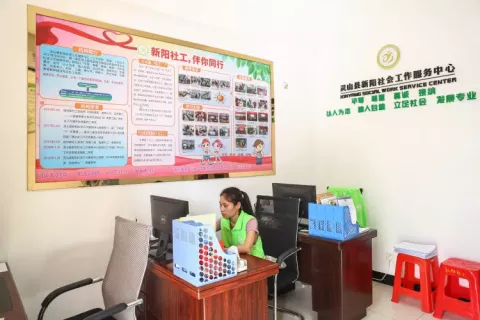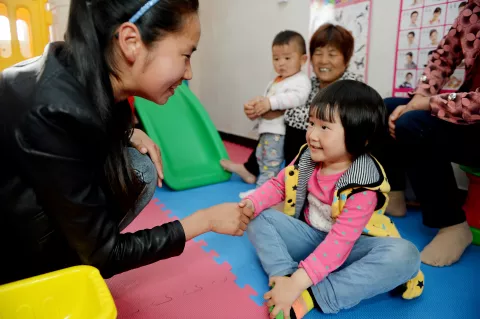UNICEF Committee Directors visit remote communities in China
UNICEF Committee Directors visit remote communities in China
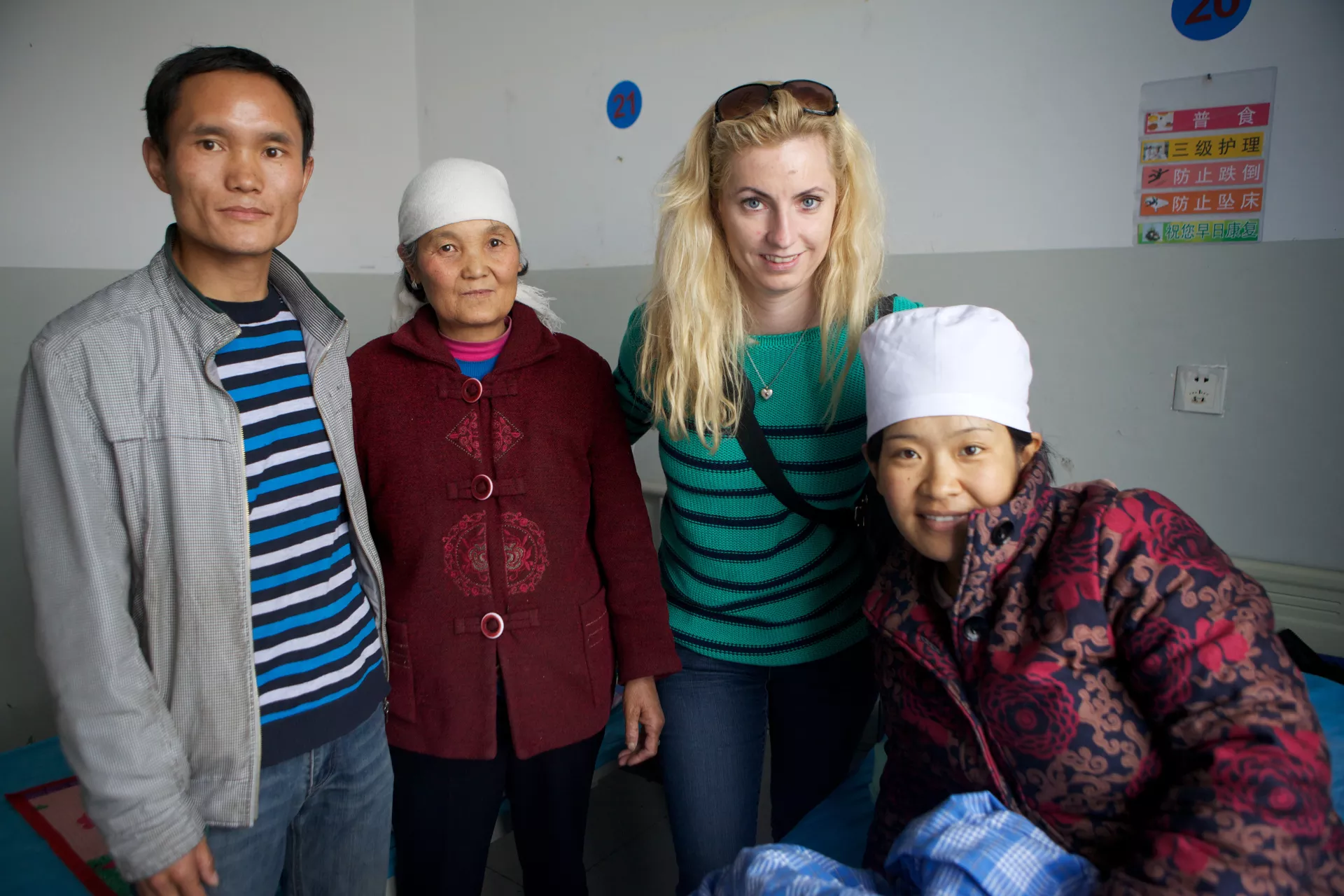
The minute the plane lands at Xining Airport, the five visiting Executive Directors of UNICEF National Committees can tell from the parched terrain visible through the small plane windows, that they are landing in a China quite different from the one where they took off.
Walking down the stairs from the plane they see that one side of the airport is a half-constructed terminal building, and the other is a wild, open land with no grass, no human habitation, only row after row of barren, reddish hills. The stark scenery looks a lot like the setting for a Hollywood Western, without horses.
Xining, the capital city of China's remote western Qinghai Province, is the starting point for a field trip organized in advance of the UNICEF Committee Directors' annual meeting in Beijing. Taking part in this visit are: Steen Andersen of the Danish Committee, Irene Chan of the Hong Kong Committee, Stefan Stefansson of the Icelandic National Committee, Ken Hayami of the Japan Committee and Jovita Majauskaite of the Lithuanian National Committee.
Over two grueling days they cover a trail of some 600 kilometers in a sparsely populated mountainous region of western China. Their itinerary includes altitude differences from 1,800 meters to nearly 4,000 meters.
On this visit they gain first-hand knowledge on UNICEF's work in some of the poorest communities of China: on safe motherhood, innovative measures to reduce stunting with micro-nutrient supplements and efforts to make classrooms culturally-sensitive in ethnic minority regions.
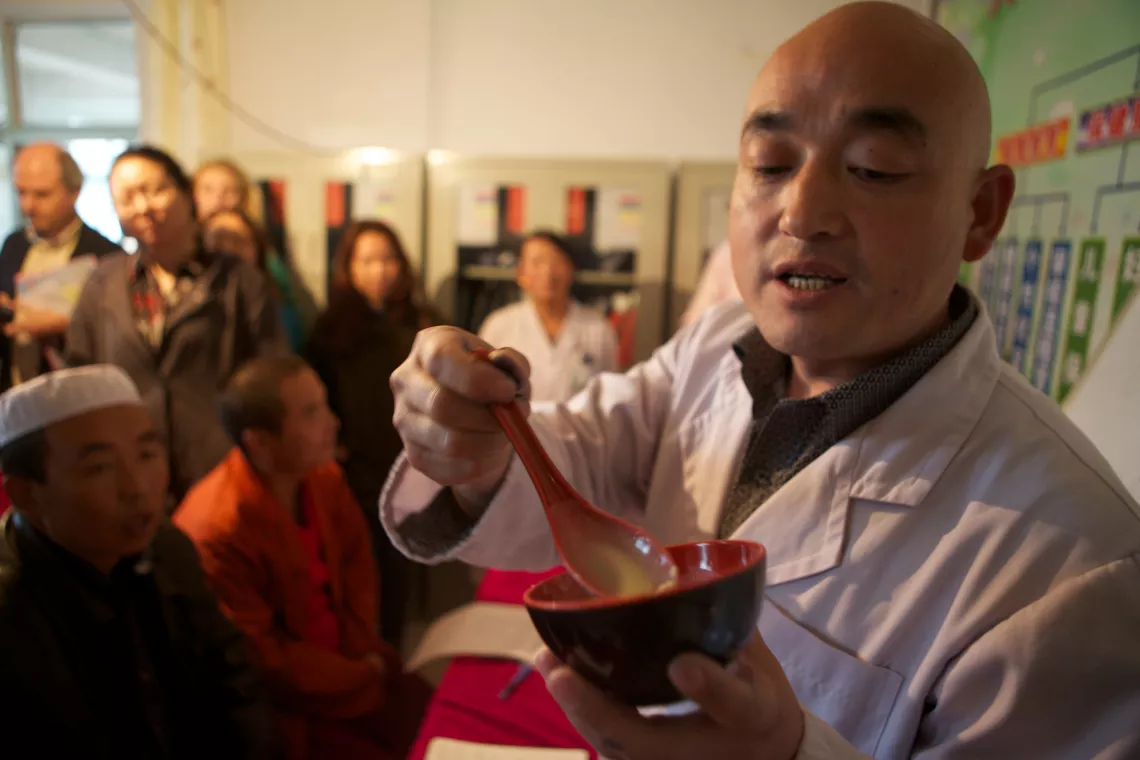
Barefoot doctors
"What struck me most is how 12 village health workers rode their motorcycles for two hours to attend our training," said Steen Andersen from the Danish Committee.
The visit coincides with the monthly training session given at Ashinu Township Hospital. Crammed into a tiny room, 12 village health workers sit in rows and attentively follow a demonstration on mixing micro-nutrient supplements into infant weaning foods given by hospital doctors.
The village health workers in this Hui minority-populated county are all male, in their 40s or 50s. They are the cornerstone of China's rural health service. They receive minimal formal medical training, so they are often called "barefoot doctors".
Robert Scherpbier, Health and Nutrition Chief of UNICEF China, is encouraged to find that the trainees are even more skilled in preparing the nutritional supplement, known as ying yang bao, than the hospital doctors.
The village doctors are mixing baby food with close attention, even though in their own homes this work is likely to be done by women.
Every month the village health workers come for half-day training in the township hospitals. And every other month, doctors from the township hospitals visit the villages to support and monitor their work.
The organization of the township hospitals and village clinics has greatly impressed Ken Hayami of the Japan Committee.
In the four households visited, every mother has a booklet that will record her clinic visits before and after the child is born, as well as the child's vaccination record. The booklet is also an easy-to-use educational tool for rural mothers, filled with color pictures and simple instructions.
"We have learned our lessons: the more pictures we use for our pamphlets, the clearer the message is for the rural mothers," added Zhao Chunxia, UNICEF China health staffer.
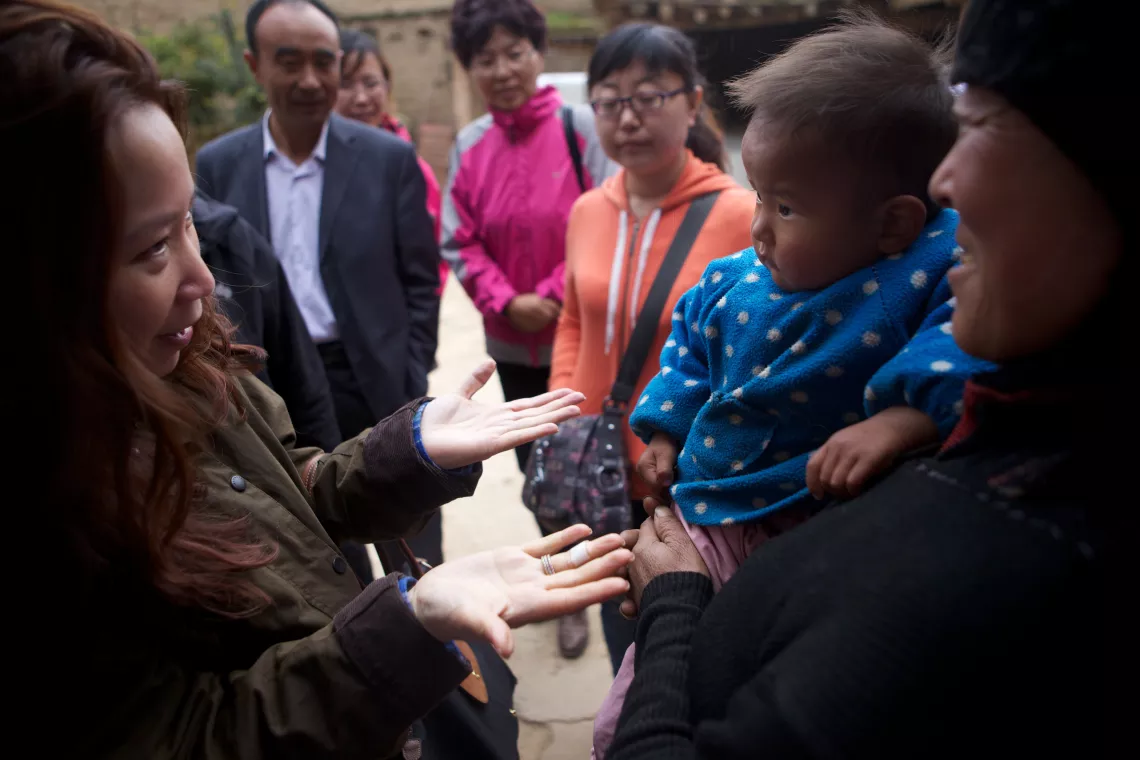
Pink Polaroid
Irene Chan of the Hong Kong Committee has carried along a pink Polaroid camera that makes her the most popular visitor in the group.
She asks permission before taking photos – showing her camera and a sample of the credit card-sized instant pictures. There are no refusals.
"It is magic!" exclaimed the wife of the village health worker of Chu'er village after the image started materializing, showing it to her three girls. She gazed at the picture with disbelief.
"I start bringing this Polaroid with me knowing that the villagers I met might never be able to receive the pictures of themselves after we left, these pictures I took could be their first pictures in life," said Irene, a veteran of many trips to rural China.
She immediately befriends a Hui toddler, whose caretakers cannot speak Mandarin. He clutches his picture with strength and determination, refusing to show it to others.
Irene also captured a precious moment of a young Tibetan woman with her mother, the day before her own child is born. Renqin Droma, 24, came the day before to the hospital for delivery. Droma herself was delivered at home.
UNICEF supported establishment of maternity waiting rooms in township hospitals. Combining with the government's hospital delivery subsidy, the county's hospital delivery rate has increased to almost 100%, making home birth nearly extinct in remote Hualong county.
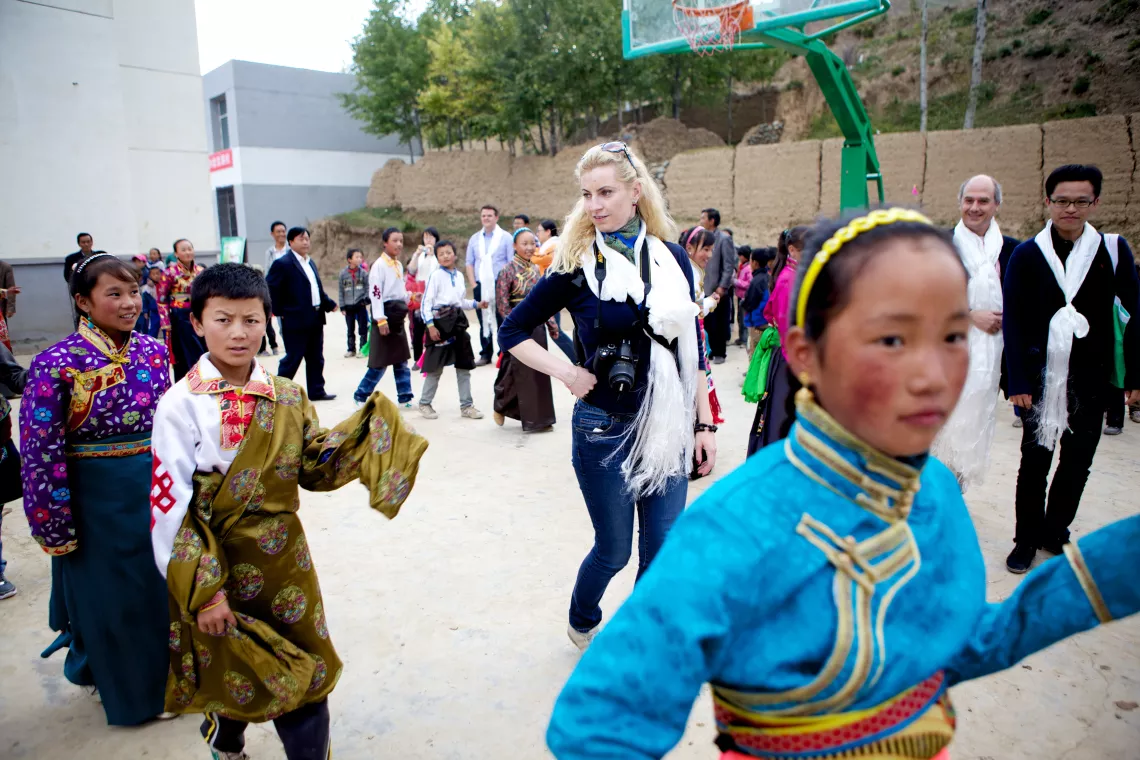
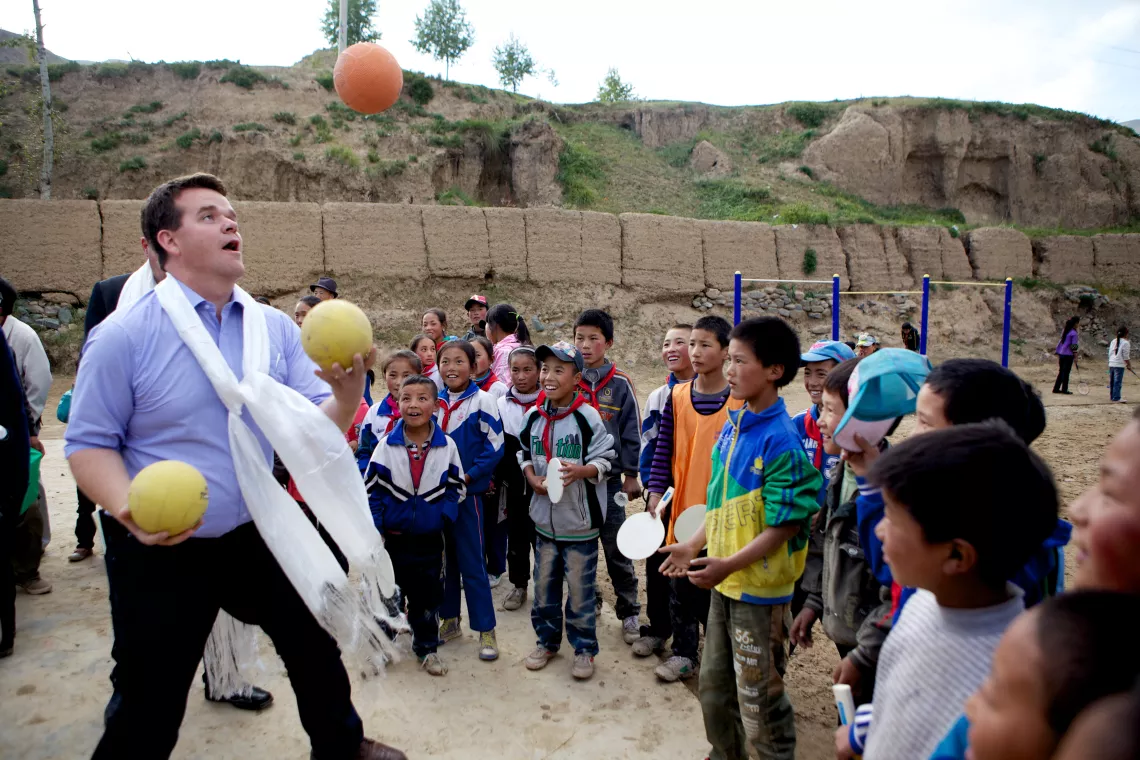
Valuing ethnic diversity
After a busy morning at the Chu'er village clinic the visitors rush to squeeze in the last chapter of the Qinghai field trip. After a punishing 90 minute drive on rural dirt roads they arrive at Jinyuan Township where UNICEF is part of a joint UN programme to improve the quality of education for remote ethnic minorities.
A special focus on the joint programme is integration of ethnic minority culture and traditional customs into the classroom. Committee Directors are ushered into tiny classrooms where teachers write elegant Tibetan letters on the black board.
Several smiling girls with bright rosy cheeks are eager to show off their bright cyan blue traditional silk robes - commonly worn in Tibetan households. They don't realize that the color of their robes is identical to the UNICEF logo.
Outside the classroom uproarious shouting and laughter explodes. A crowd has gathered around Stefan Stefansson of the Icelandic National Committee as he deftly juggles three volleyballs to a crowd of awe-struck Tibetan boys. As the volleyballs float over his head, Stefansson's broad Scandinavian frame towers above the adoring crowd, leaving an indelible image of this historic trip.
"I had little or no expectations for this trip, but in the end I was impressed by the level of support and commitment of the Chinese government to improving the nutrition of the people. They are very eager to work with UNICEF," concluded Stefansson.
By the end of the intense two day visit, the five UNICEF Committee Directors visit three health facilities at county, township and village levels. They drop in on four households and exchange views with teachers in three ethnic minority primary schools.
They have covered a lot of ground.


